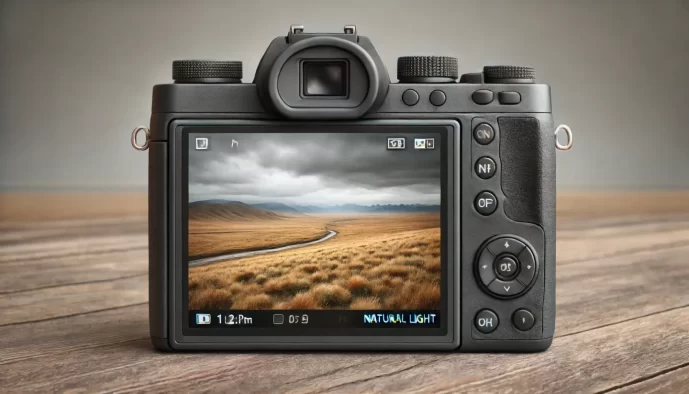10 reasons why your landscape photos are boring
Discover common pitfalls and tips to improve your landscape photography.

Lack of a Focal Point
No Clear Subject
A landscape photo without a clear subject is like a story without a protagonist: aimless and somewhat confusing. Your viewers need something to latch onto, whether it’s a striking tree, a boulder, or a pattern in the sand. Without this, their eyes will wander aimlessly around the frame, much like a puppy in a vast park, unsure where to go.
Missing Foreground Interest
Foreground interest can act as an inviting pathway into the scene for your viewers. It’s the red carpet that leads them into the grand scene you’re trying to capture. Without it, your landscape might feel as flat as a pancake, lacking depth and dimension.
Poor Composition
Ignoring the Rule of Thirds
The rule of thirds is the old but gold guideline in photography. Placing key elements off-center at the intersections of dividing lines makes the image more balanced and engaging. Ignoring this rule often leaves your photos feeling like a misaligned seesaw, awkward and unsteady.
Overcrowded Elements
An overcrowded image is like a tourist bus at a popular site: too much to see, too little space. Simplicity is powerful. Try to isolate a few elements that tell the story best, rather than including the whole forest and confusing your viewer’s eye.
Unbalanced Scene
Balance isn’t just for gymnasts. Photos need it too. An unbalanced composition can make your image feel like it’s about to tip over. Use symmetry or asymmetry wisely to create a harmonious scene that feels stable and pleasing to the eye.
Flat Lighting
Harsh Midday Light
Shooting in the harsh midday sun is like going to the beach at noon; it’s not going to be flattering. The flat light washes out textures and minimizes shadows, leaving your photos looking like they’re wearing too much foundation – no depth or contour!
No Shadows or Highlights
Shadows and highlights are the salt and pepper of photography; without them, your images are as bland as unsalted mashed potatoes. Early morning or late afternoon light casts beautiful shadows and creates highlights, giving your landscape that three-dimensional pop.
Uninteresting Skies
Blank, Cloudless Sky
A clear blue sky might be great for a picnic but in photography, it’s like a blank canvas — uninspiring and dull. Some clouds can add drama and scale, turning what could be a bland overhead into a masterpiece.
Overexposed Highlights
Blown-out skies are the bane of many landscape photos. They’re like that loud friend who drowns out everyone else – distracting and overpowering. Use a graduated ND filter or bracket your exposures to keep that sky in check.
Repetitive Elements
Similar Textures and Colors
Variety is the spice of life and also of compelling landscapes. A mix of textures and colors can guide the eye and keep the viewer engaged. Without these, your photo could have more monotony than a long speech on paint drying.
Lack of Contrast
Contrast isn’t just a slider in Photoshop; it’s a key element in capturing engaging photos. Without it, your image might as well be a foggy window, difficult to decipher and easy to overlook.
Mismanaged Depth
Everything in Focus
Having everything in sharp focus can make your photo as overwhelming as a buffet where you can’t choose what to eat. Sometimes, a little blur in the foreground or background can create depth and focus the attention where you want it.
Lack of Depth Cues
Depth cues, like leading lines and layered elements, give a photo a sense of “being there.” Without them, your image is as flat as a cardboard cutout, not a window into another world.
No Sense of Scale
Missing Reference Objects
Without a familiar object for scale, such as a person or a tree, your grand scene could be mistaken for a miniature model. Scale is the secret sauce that can transform the mundane into the magnificent.
Ambiguous Dimensions
When viewers can’t tell if they’re looking at a hill or a mountain, your photo lacks communication. Use scale to tell the story of size and grandeur effectively.
Weak Color Palette
Oversaturated Colors
Pumping up the saturation might seem like a good idea, but too much makes your photo look like it came out of a candy factory. Real landscapes are more subtle, more refined, and don’t need the neon treatment.
Muddy or Dull Colors
Conversely, too little color or poorly managed hues can make your landscape look as lifeless as a zombie. Aim for a palette that reflects the true beauty of the scene, not one that fades into the background.
Lack of Motion
Static Water or Clouds
Motion in a landscape, like flowing water or scudding clouds, adds life and energy. Static scenes are like paused videos — they fail to capture the dynamic beauty of nature.
No Dynamic Elements
Adding a dynamic element, like a flock of birds, a moving train, or swaying trees, can inject life and tell a story of movement within the stillness. Without these, your landscape could be as dull as watching paint dry in slow motion.
Ignoring the Weather
Not Using Mist or Fog
Mist and fog can transform an ordinary scene into a mysterious or ethereal landscape. They are the magicians of the natural world, turning the mundane into the mystical. Avoiding them is like refusing to use a spellbook you’ve been given.
Avoiding Rain or Snow
Rain and snow aren’t just challenges to keep your camera dry; they’re opportunities to capture landscapes with a mood and texture that clear weather can’t offer. A scene with rain or fresh snowfall can evoke emotions and a sense of place that sunshine can’t always provide.
By understanding and addressing these common pitfalls, you can elevate your landscape photography from boring to breathtaking. Remember, every landscape has a story to tell, and with the right techniques, you can be its voice.